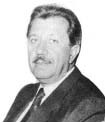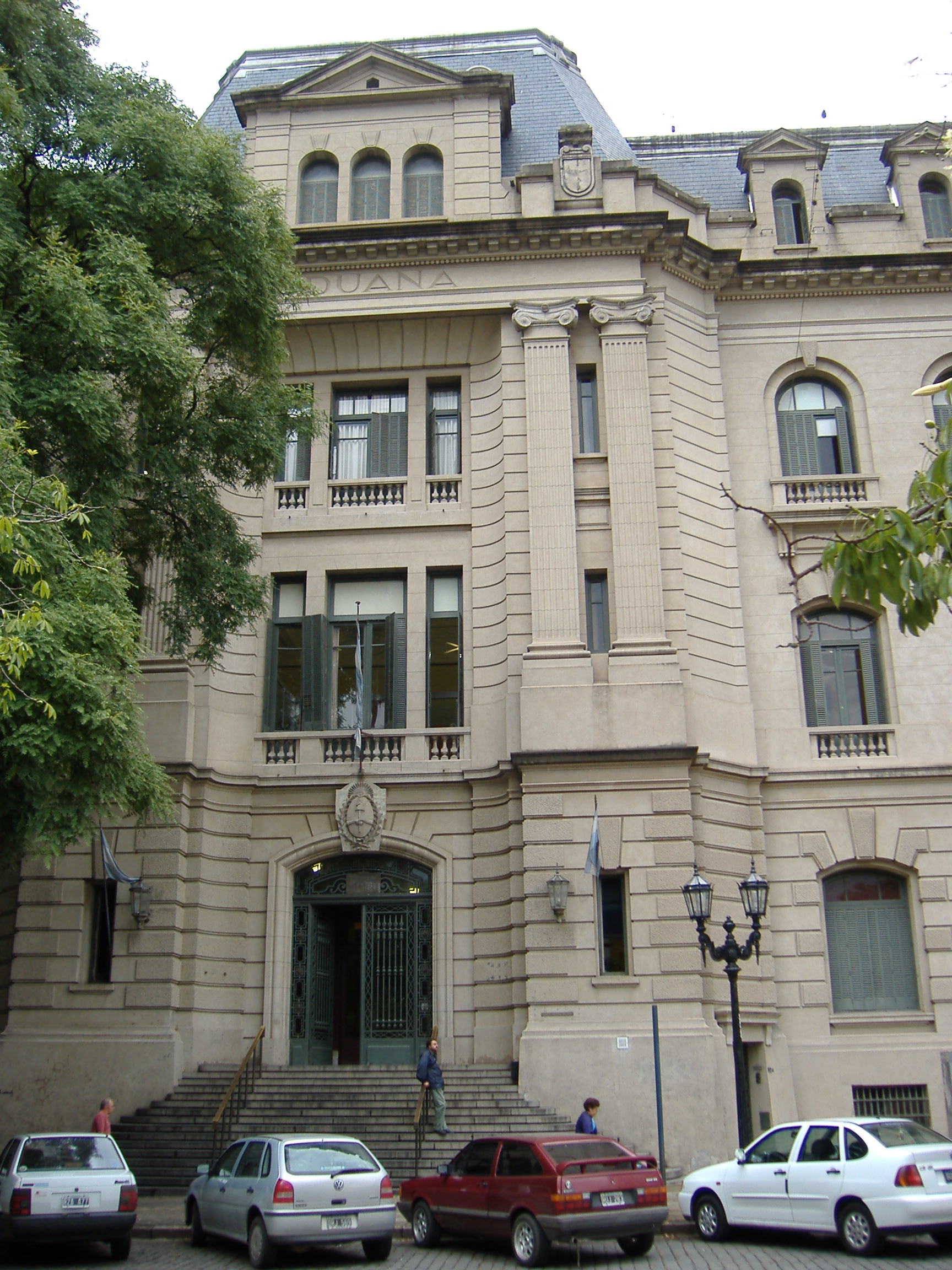|
Simón De Iriondo
Simón de Iriondo (1836–1883) was an Argentine politician of the National Autonomist Party, who was twice governor of the province of Santa Fe, from 1871 to 1874 and from 1878 to 1882. Iriondo was also the Government Minister of governor Mariano Cabal and part of the cabinet of President Nicolás Avellaneda. After his second term in office, in 1883, he was appointed senator. As a governor, Iriondo supported the policy of colonization, as Santa Fe was scarcely populated at the time except for the large cities of Santa Fe and Rosario on the banks of the Paraná River. He founded a colony in the north of the province which become the present-day city of Reconquista The ''Reconquista'' (Spanish language, Spanish and Portuguese language, Portuguese for ) or the fall of al-Andalus was a series of military and cultural campaigns that European Christian Reconquista#Northern Christian realms, kingdoms waged ag .... His administration amended the Provincial Constitution of 18 ... [...More Info...] [...Related Items...] OR: [Wikipedia] [Google] [Baidu] |
Reconquista, Santa Fe
Reconquista is a city in the north of the , from Santa Fe, Argentina, the provincial capital. It is the head town of the General Obligado Department, and it has 99,288 inhabitants according to the . The city lies on a branch of the Paraná River opposite the city of Goya, Corrientes. As of 2005, the construction of a road link between the two cities is under study; at present there is no way to cross the multiple minor branches, streams and wetlands except by boat. Reconquista was founded on 27 April 1872 as a military fort, established by Colonel Manuel Obligado, in lands formerly belonging to the Society of Jesus, Jesuit mission (Christian), mission ''Reducción San Jerónimo del Rey''. It was declared a city in 1921. Climate The climate of the region is wet subtropical (average in winter, in summer), with a mean annual rainfall of . Transportation The city is served by commercial airlines using the Reconquista Airport, served, as of 2023, by LADE. History Reconquista ... [...More Info...] [...Related Items...] OR: [Wikipedia] [Google] [Baidu] |
1883 Deaths
Events January * January 4 – ''Life (magazine), Life'' magazine is founded in Los Angeles, California, United States. * January 10 – A Newhall House Hotel Fire, fire at the Newhall Hotel in Milwaukee, Wisconsin, United States, kills 73 people. * January 16 – The Pendleton Civil Service Reform Act, establishing the United States civil service, is passed. * January 19 – The first electric lighting system employing overhead wires begins service in Roselle, New Jersey, United States, installed by Thomas Edison. February * February 15 – Tokyo Electrical Lightning Grid, predecessor of Tokyo Electrical Power (TEPCO), one of the largest electrical grids in Asia and the world, is founded in Japan. * February 16 – The ''Ladies' Home Journal'' is published for the first time, in the United States. * February 23 – Alabama becomes the first U.S. state to enact an Competition law, antitrust law. * February 28 – The first vaudeville th ... [...More Info...] [...Related Items...] OR: [Wikipedia] [Google] [Baidu] |
1836 Births
Events January–March * January 1 — Hill Street Academy is named Colombo Academy and acquired by the Government, establishing the first public school in Sri Lanka. * January 1 – Queen Maria II of Portugal marries Prince Ferdinand Augustus Francis Anthony of Saxe-Coburg-Gotha. * January 5 – Former U.S. Representative Davy Crockett of Tennessee arrives in Texas to join the Texan fight for independence from Mexico. * January 12 ** , with Charles Darwin on board, reaches Sydney. ** Will County, Illinois, is formed. * February 8 – London and Greenwich Railway opens its first section, the first railway in London, England. * February 23 – Texas Revolution: The Battle of the Alamo begins, with an American settler army surrounded by the Mexican Army, under Santa Anna. * February 25 – Samuel Colt receives a United States patent for the Colt revolver, the first revolving barrel multishot firearm. * March 1 – Texas Revolution – Convention of 1836: Delegate ... [...More Info...] [...Related Items...] OR: [Wikipedia] [Google] [Baidu] |
Manuel María Zavalla
Manuel may refer to: People * Manuel (name), a given name and surname * Manuel (''Fawlty Towers''), a fictional character from the sitcom ''Fawlty Towers'' * Manuel I Komnenos, emperor of the Byzantine Empire * Manuel I of Portugal, king of Portugal * Manuel I of Trebizond, Emperor of Trebizond Places *Manuel, Valencia, a municipality in the province of Valencia, Spain *Manuel Junction, railway station near Falkirk, Scotland Other * Manuel (American horse), a thoroughbred racehorse * Manuel (Australian horse), a thoroughbred racehorse * Manuel and The Music of The Mountains, a musical ensemble * ''Manuel'' (album), music album by Dalida, 1974 See also *Manny (other), a common nickname for those named Manuel *Manoel (other) *Immanuel (other) *Emmanuel (other) *Emanuel (other) *Emmanuelle (other) *Manuela (other) Manuela may refer to: People * Manuela (given name), a Spanish and Portuguese feminine given na ... [...More Info...] [...Related Items...] OR: [Wikipedia] [Google] [Baidu] |
Servando Bayo
Servando Bayo (October 27, 1822 – May 18, 1884) was an Argentine politician who served as the National Autonomist Party governor of the province of Santa Fe from April 7, 1874, to April 7, 1878. A native of Rosario, Bayo attended a military training institution and took part in the Battle of Cepeda with the rank of captain. As a politician, he was Rosario's Political Chief (comparable to a non-elected mayor), a senator, and governor of the province (with Juan Manuel Zavalla as his vice-governor). Governership Bayo is regarded as a dynamic ruler who supported progressive measures. During his governorship, he sponsored the creation of the Santa Fe Provincial Bank, to increase access to credit for the business and productive sector, while breaking the financial monopoly of the Bank of London, which the governor also deprived of the authorization to emit currency. The Bank of London retaliated against the newly created Provincial Bank by inducing bank runs to weaken it. ... [...More Info...] [...Related Items...] OR: [Wikipedia] [Google] [Baidu] |
Governor Of Santa Fe
The Governor of Santa Fe () is a citizen of Santa Fe Province, in Argentina, holding the office of governor for the corresponding period. Currently the governor of Santa Fe is Maximiliano Pullaro, of the Justicialist Party. According to the provincial constitution (sanctioned in 1962), . the governor is elected by the simple majority of the popular vote, along with a vice governor, for a four-year term, and cannot be re-elected consecutively. The governor must be a native Argentine citizen or the child of a native citizen, and must either have been born in the province or resided continuously in the province during the two years prior to the election. List of '' |
Coronda
Coronda is a small city in the . It is located in the San Jerónimo Department, 43 km south from the provincial capital ( Santa Fe). It has a population of about 18,000 inhabitants (). The town was founded in 1867 by Governor Nicasio Oroño, and became a city on 6 February 1860. Its parish church was designed by Carlo Zucchi. Notable people * Carlota Garrido de la Peña (1870-1958), journalist, writer, teacher References * * Populated places in Santa Fe Province Cities in Argentina {{SantaFeAR-geo-stub ... [...More Info...] [...Related Items...] OR: [Wikipedia] [Google] [Baidu] |
Paraná River
The Paraná River ( ; ; ) is a river in south-central South America, running through Brazil, Paraguay, and Argentina for some ."Parana River". Encyclopædia Britannica. Encyclopædia Britannica Online. Encyclopædia Britannica Inc., 2012. Web. 26 May. 2012 https://www.britannica.com/EBchecked/topic/443063/Parana-River . "Rio de la Plata". Encyclopædia Britannica. Encyclopædia Britannica Online. Encyclopædia Britannica Inc., 2012. Web. 26 May. 2012 https://www.britannica.com/EBchecked/topic/463804/Rio-de-la-Plata Among South American rivers, it is second in length only to the Amazon River. It merges with the Paraguay River and then farther downstream with the Uruguay River to form the Río de la Plata and empties into the Atlantic Ocean. The first European to go up the Paraná River was the Venetian explorer Sebastian Cabot (explorer), Sebastian Cabot, in 1526, while working for Spain. A drought hit the river in 2021, causing a 77-year low. Etymology In eastern South Amer ... [...More Info...] [...Related Items...] OR: [Wikipedia] [Google] [Baidu] |
Argentina
Argentina, officially the Argentine Republic, is a country in the southern half of South America. It covers an area of , making it the List of South American countries by area, second-largest country in South America after Brazil, the fourth-largest country in the Americas, and the List of countries and dependencies by area, eighth-largest country in the world. Argentina shares the bulk of the Southern Cone with Chile to the west, and is also bordered by Bolivia and Paraguay to the north, Brazil to the northeast, Uruguay and the South Atlantic Ocean to the east, and the Drake Passage to the south. Argentina is a Federation, federal state subdivided into twenty-three Provinces of Argentina, provinces, and one autonomous city, which is the federal capital and List of cities in Argentina by population, largest city of the nation, Buenos Aires. The provinces and the capital have their own constitutions, but exist under a Federalism, federal system. Argentina claims sovereignty ov ... [...More Info...] [...Related Items...] OR: [Wikipedia] [Google] [Baidu] |
Rosario
Rosario () is the largest city in the central provinces of Argentina, Argentine province of Santa Fe Province, Santa Fe. The city, located northwest of Buenos Aires on the west bank of the Paraná River, is the third-most populous city in the country after Buenos Aires and Cordoba. With a growing and important metropolitan area, Greater Rosario has an estimated population of 1,750,000 . One of its main attractions includes the neoclassical architecture, neoclassical, Art Nouveau, and Art Deco architecture that has been preserved in hundreds of residences, houses and public buildings. The city is also famous for being the birthplace of the Argentine footballer Lionel Messi. Rosario is the head city of the Rosario Department and is located at the heart of the major industrial corridor in Argentina. The city is a major rail transport, railroad terminal and the shipping center for north-eastern Argentina. Ships reach the city via the Paraná River, which allows the existence of a ... [...More Info...] [...Related Items...] OR: [Wikipedia] [Google] [Baidu] |



